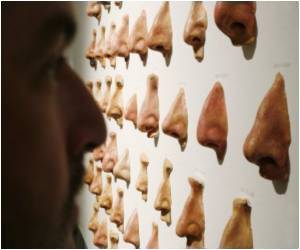A scientist has pointed out that with genetically modified frog cells , it is possible for the artificial nose of a robot to smell more accurately than electronic noses.

Instead, Shoji Takeuchi, a bioengineer at the University of Tokyo in Japan, believes there is nothing quite as good as biology for distinguishing between different biomolecules, such as disease markers in our breath. So he and his team have developed a living smell sensor that could distinguish between many nearly identical biomolecules.
As a proof of concept, Takeuchi has built a robot that shakes its head when moth pheromones are sensed by the nose.
He now wants to extend the frog-based technology. "The X. laevis oocyte has high versatility for the development of chemical sensors for various odorants," he says.
"We believe that a shared ability to smell might open a new relationship between man and robot."
The study has been published in Proceedings of the National Academy of Sciences.
Advertisement









